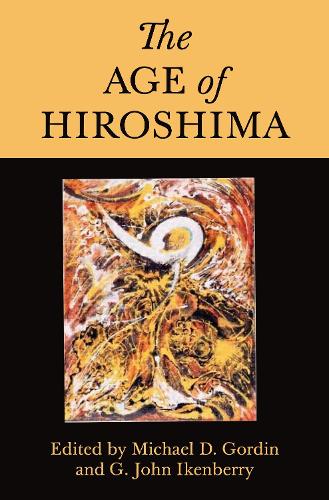
The Age of Hiroshima
(Hardback)
Available Formats
Publishing Details
The Age of Hiroshima
By (Author) Professor Michael D. Gordin
Edited by G. John Ikenberry
Contributions by Campbell Craig
Contributions by Alex Wellerstein
Contributions by Sean L. Malloy
Contributions by David Holloway
Contributions by Takuya Sasaki
Contributions by Shinsuke Tomotsugu
Contributions by Srinath Raghavan
Contributions by Wakana Mukai
Princeton University Press
Princeton University Press
24th March 2020
United States
Classifications
Tertiary Education
Non Fiction
Military history: post-WW2 conflicts
International relations
Modern warfare
Nuclear weapons
940.542521954
Physical Properties
Hardback
448
Width 156mm, Height 235mm
Description
A multifaceted portrait of the Hiroshima bombing and its many legacies On August 6, 1945, in the waning days of World War II, the United States dropped an atomic bomb on the Japanese city of Hiroshima. The city's destruction stands as a powerful symbol of nuclear annihilation, but it has also shaped how we think about war and peace, the past and
Reviews
"[An] outstanding collection of essays presenting new perspectives on the historical and cultural significance, both then and now, of the atomic bombing of Hiroshima on the 75th anniversary of the attack."---M. D. Ericson, Choice
"
An impressive achievement: a stimulating array of essays from a broad range of disciplinary perspectives, including diplomatic history and international relations, political theory, and science and technology studies.
"---James Cameron, International Journal of Military History and HistoriographyAuthor Bio
Michael D. Gordin is the Rosengarten Professor of Modern and Contemporary History at Princeton University. His books include Five Days in August: How World War II Became a Nuclear War (Princeton). G. John Ikenberry is the Albert G. Milbank Professor of Politics and International Affairs at Princeton and a Global Eminence Scholar at Kyung Hee University in Seoul, South Korea. His books include Liberal Leviathan: The Origins, Crisis, and Transformation of the American World Order (Princeton).
